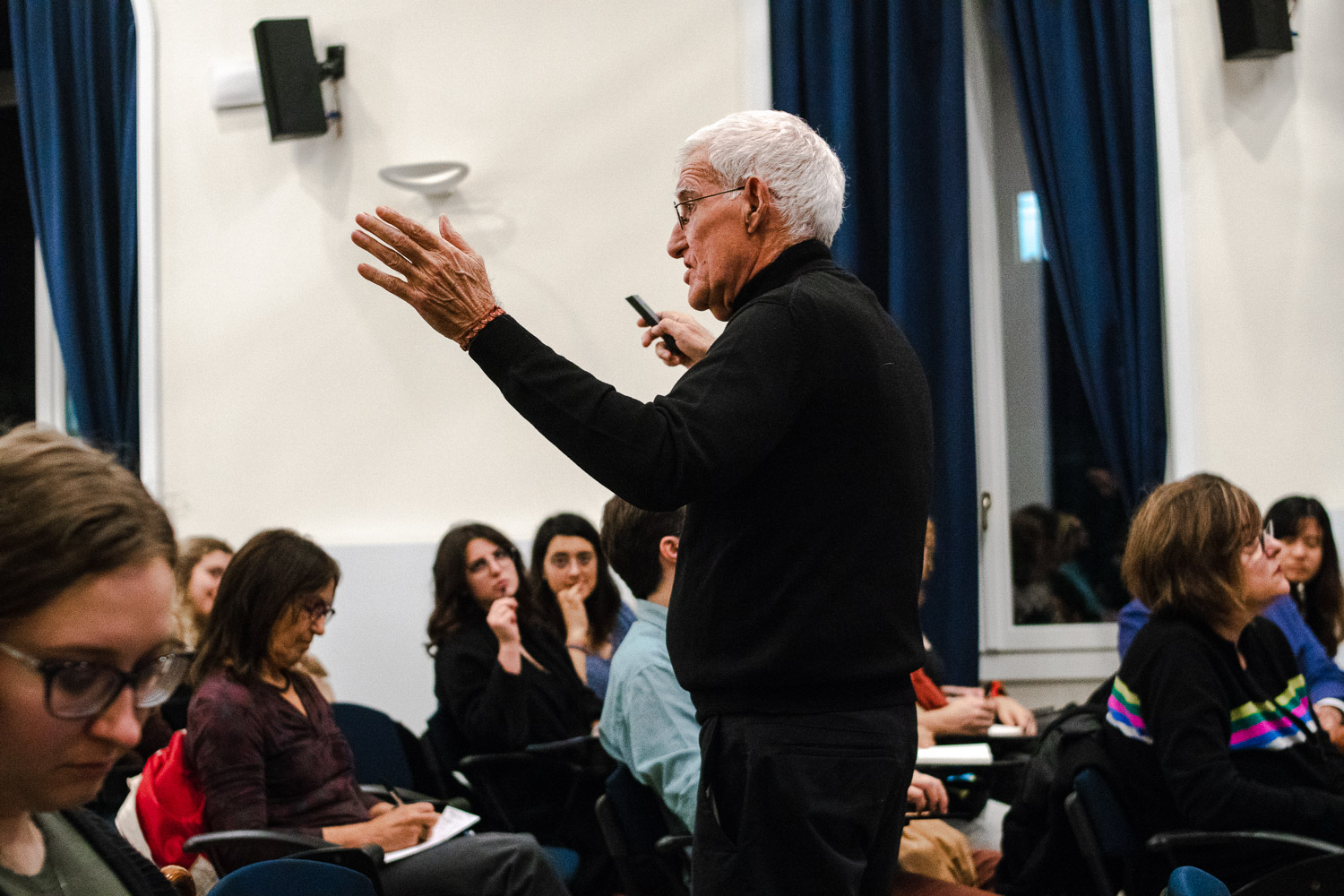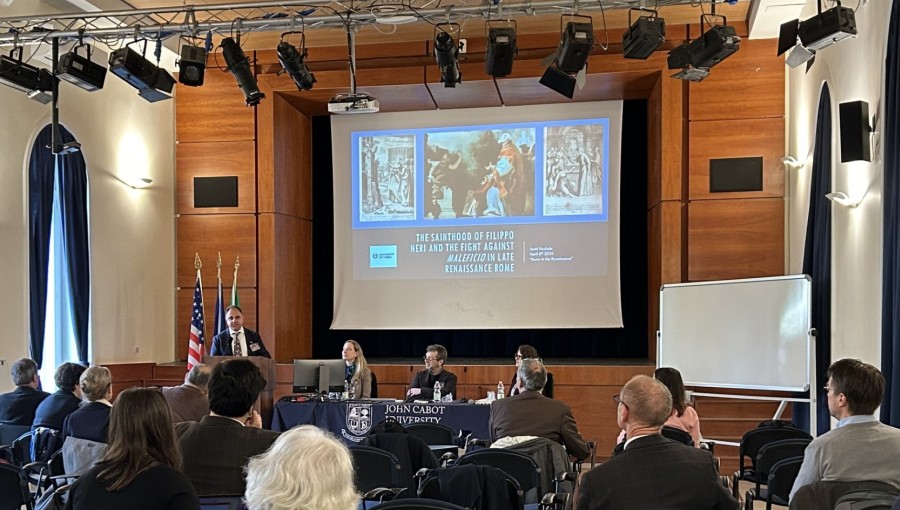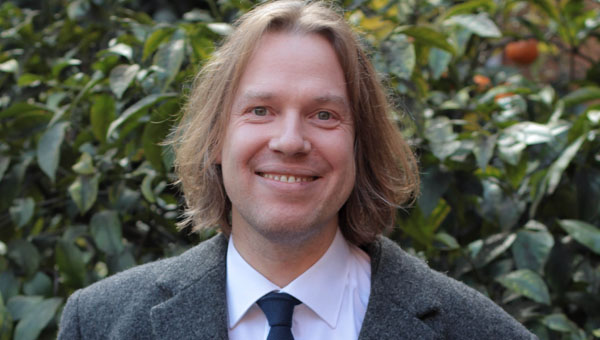The Witch Craze in Europe: A Talk by Professor Teofilo F. Ruiz
John Cabot University’s Department of History and Humanities welcomed Professor Teofilo F. Ruiz for a talk called The Witch Craze in Late Medieval and Early Modern Europe on November 5, 2019. The talk, moderated by History Professor Fabrizio Conti, traced the origins and nature of the witch craze in Western Europe in the late 15th, 16th and 17th centuries.
Witchcraft in Europe
In the late 15th century in Europe, over 80 thousand people were put to death because they were thought to practice witchcraft. They were predominantly elderly women from small villages, who were targeted, labeled as witches, and killed. The witch craze was not a widely spread phenomenon at the time, and it was mostly characteristic of Northern Europe. Witchcraft was believed to be a mix of malefic acts that aimed at pleasing Satan, and it implied a dualistic separation between God and the devil, and good and evil.
Professor Ruiz explained that the term witchcraft was often used to describe religions or beliefs that were not common, such as pre-Christian agricultural cults. When religious men traveled to rural and isolated areas to spread Christianity, they often encountered various kinds of believers and cults, which were mistaken for devil worshippers. Midwives were among the favorite targets because stillbirths were thought to be their way of sacrificing babies to the devil. Brewers were also often accused of practicing witchcraft, because their product intoxicated men and that was thought to make them more vulnerable to the devil’s work.
Summis Desiderantes, Malleus Maleficarum and Compendium Maleficarum
Numerous works have been written about witchcraft. In 1484, Pope Innocent VIII issued a papal bull called Summis desiderantes affectibus, which recognized the existence of witches, approved their persecution, and threatened those who failed to make the inquisitors’ job easier. This text is considered to have ushered in witch-hunts. In 1486, the Summis desiderantes affectibus was published as part of the preface to Heinrich Kraemer and Jakob Sprenger’s The Malleus Maleficarum, a treatise on witchcraft. An inquisitor and a friar respectively, Kraemer and Sprenger divided the text into 3 main sections that explain how to identify witchcraft, how to protect oneself from it, and how to prosecute the accused.
The witch craze began to spread widely before the Protestant Reformation of the church in the 16th century. Germany was the epicenter of witchcraft because that’s where the Reformation began. In Protestant cities, most of the people accused of witchcraft were Catholic, and in Catholic cities most of the accused were Protestant. The accusers were both male and female, and they were often related to the accused. Among the ways to recognize a witch, according to the beliefs of the time, were physical anomalies such as a third nipple, or marks given by the devil, which usually resembled animals, like bats. These marks were immune to pain and they were mostly found in the accused’s armpits or around their genitals.
In 1608, Italian priest Francesco Maria Guazzo published the Compendium Maleficarum, a witch-hunter’s manual that gives a detailed description of witches’ powers and practices. According to the Compendium Maleficarum, witches had to sign a blood pact with the devil and place it on a crossroads. They had to abjure and cast away their rosaries and religious objects, pay homage to the devil by changing their name, recruit followers and make sacrifices in the devil’s name. They were believed to take part in witch gatherings called Sabbat, where they ate human flesh, murdered children, and had orgies.
The Decline of Witch Hunts
Professor Ruiz concluded that around the 1660s, magic was beginning to be shunned and put to the side. Witch trials gradually diminished and eventually stopped completely. Some still believe in witchcraft, particularly in Africa and Latin America, but people are no longer persecuted and put to death.
Distinguished Professor & Robert and Dorothy Wellman Chair in Medieval History at the University of California, Los Angeles, Teofilo F. Ruiz has been teaching history for almost four decades. Born in Cuba, Professor Ruiz moved to the United States in 1961, and in 1974 he earned a Ph.D. in History from Princeton University. In 1995, Professor Ruiz was named “Outstanding Master’s Universities and Colleges Professor of the Year” by the Carnegie Foundation for the Advancement of Teaching, and in 2008 he received UCLA’s Distinguished Teacher Award. In February 2012, President Barack Obama awarded Professor Ruiz a National Humanities Medal. With over thirteen books and numerous articles, Professor Ruiz’s scholarship has been recognized with fellowships from Mellon, Guggenheim, and the National Endowment for the Humanities (NEH).






